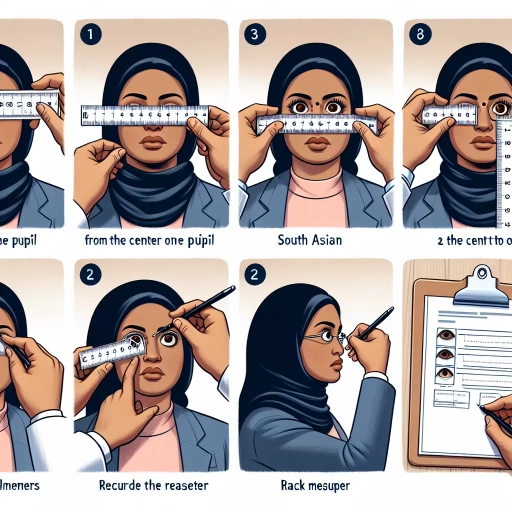How To Measure Pupillary Distance

Understanding Pupillary Distance
The Importance of Accurate Pupillary Distance Measurements
One of the primary factors influencing both the comfort and effectiveness of your eyewear lies in the accurate measurement of your pupillary distance (PD). PD involves the distance between the centre of your pupils, and this measurement serves as a guide for mounting your lenses in your frames so your eyes align with the optical centre of your lenses. Inaccurate PD measurements can lead to eyestrain, headaches, or even blurry vision. Hence, it's very important to get it right.
Components of Pupillary Distance
Pupillary distance can be broken down into two components. The first one is the Distance PD which is acquired for glasses that you'd use for seeing distance, like driving glasses or sunglasses. The second one is Near PD which is utilized for reading glasses and computer glasses. By understanding these two components, users can acquire accurate PD measurements tailored to their specific requirements.
Professional vs Self-measurement of Pupillary Distance
While the process of measuring pupillary distance might sound intimidating, it is a task that can be performed both professionally and personally. When you visit an optometrist or an ophthalmologist, they use a device known as a pupillometer that gives extremely accurate results. However, there is still the potential of measuring your PD at home with a little bit of practice and precision, which is particularly useful in times when a visit to the eye doctor isn't feasible.
Measuring Your Pupillary Distance
Using a Printable PD Ruler
One of the simplest ways to measure pupillary distance is by using a printable PD ruler. You can download a PD ruler from various eyewear websites, print it out ensuring the scale is correct (usually a standard credit card size is mentioned for reference), place it flat against your forehead, and then measure the distance between your pupils by looking into a mirror or having someone else read it for you. Keep your eyes straight and look directly ahead to achieve accurate results.
Using a Regular Ruler
If you don't have access to a printer, don't worry, a regular ruler can also get the job done with a little more attention to detail. You'd require a ruler with millimeter measurements and a mirror. Again, the idea is to measure the distance between the centers of your pupils with your eyes looking straight ahead. It's recommended to repeat the process a few times to ensure an accurate measurement.
Using Online Tools and Apps
As the world becomes more tech-savvy, there are several online tools and applications available that help in obtaining your PD. These can be quite handy with user-friendly interfaces and straightforward instructions. Some of these apps even allow for automatic measurements using advanced facial recognition technologies, allowing for an accurate and convenient measuring experience.
Common Issues and Solutions when Measuring Pupillary Distance
Poor Lighting
Like all vision-based measurements, measuring pupillary distance requires good lighting. Poorly lit environments can significantly affect precision and ultimately lead to improper PD measurements. You can circumvent this by making sure you measure your PD in a well-lit room or use a torchlight if necessary.
Inconsistent Results
When measuring pupillary distance by oneself, it's not uncommon to get slightly different results in each attempt. This is normal especially if you are doing it for the first time. However, do not get frustrated. Practice makes perfect, and getting the hang of it usually just requires a bit of patience.
Unsure about which Measurement to Choose
As mentioned, there are two types of PD measurements: Distance PD and Near PD. If you're getting glasses for the first time and aren't sure about which measurement to use, going for the more common Distance PD may be a safe bet. However, a quick consultation with an optometrist can clear any uncertainties that you may have.